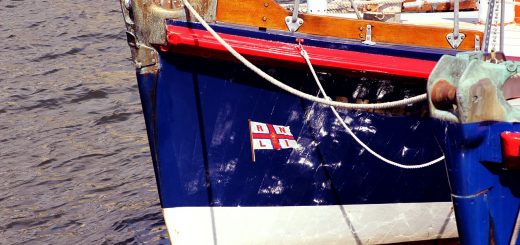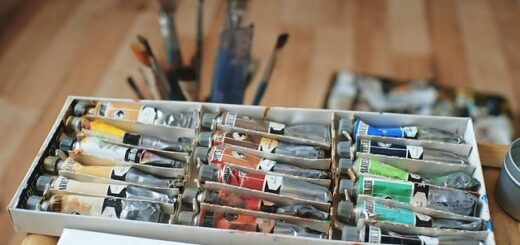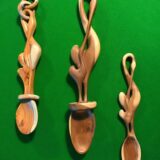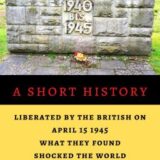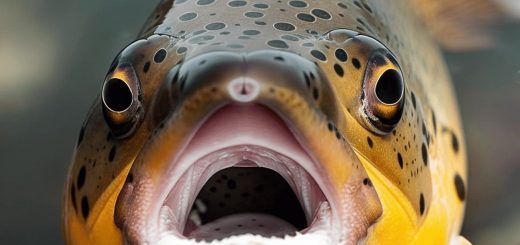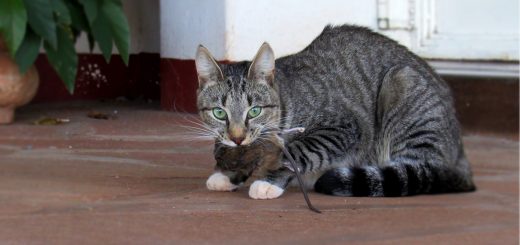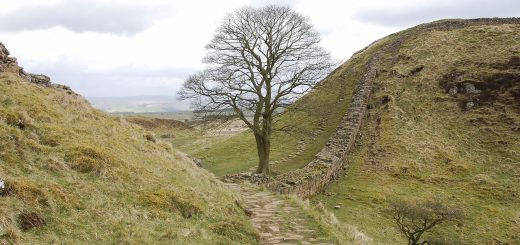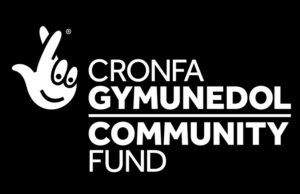A Tale of Two Boys – Part 2
Following on from the story of 16-year-old Wilhelm ‘Willi’ Hübner, here is the story of 12-year-old Alfred Czech…
Alfred’s Story

Alfred Czech was born on 12 October 1932 into a farming family in the village of Goldenau, Silesia*, about 240km east of where Willi Hübner lived. He had a sister and his father, a veteran of the First World War, still suffered from his injuries. They were a close family and his mother worked hard. Alfred helped on the farm and like any small boy loved to play in the countryside, which he knew well. Like Willi, he too joined the Jungvolk when he was eight and began the life of Nazi indoctrination that was the lot of all German children. Membership of the youth groups was in theory voluntary, but if you opted out you were likely to be sent to a concentration camp. For the most part, boys like Alfred enjoyed the outdoor activities and comradeship of these organisations.
When Alfred turned 12 the war was going badly for Germany and the fighting in the East was desperate, brutal and overwhelming. By the early part of 1945 the Russians were pushing well into Poland and by late January they had begun the Silesian campaign, advancing over 200km in just ten days.
Sometime in February the fighting arrived near Alfred’s home town. Alfred and his war-disabled father were outside working when they spotted a grenadier struggling back from the front lines where a group of infantry had come under heavy mortar fire and were in grave danger. Alfred’s father said the man looked wounded and straight away Alfred hitched two horses to the farm’s cart and, loading a hand sled, set off to see if he could help. It was too risky to take the horses close to the action so Alfred hid them behind cover and, taking his hand sled, made his way to the wounded men. Under fire he transported them one-by-one to the cart, recovering eight men on his first trip back to the farm and despite the danger he returned to rescue the remaining four soldiers.
It was an outstanding act of selfless bravery and it was not long before the wounded men, now back with their division, reported the deed and Alfred’s life was to change for ever. About that time, he was presented with a watch because he had taken part in the discovery and arrest of an enemy spy. Alfred had noticed a corporal taking photographs, but he also spotted that the soldier had his rank insignia, a triangle, incorrectly on his right arm. Alfred reported the man and followed him until he was arrested.
A few days later a senior officer appeared at the Czech family home to inform Alfred that he was to be awarded the Iron Cross 2nd Class and taken to Berlin to join in a Hitlerjungend parade at the Reich Chancellery. Alfred was so proud and excited, but his mother, fearing that he would come to harm on the way, was not keen for him to go. However, Alfred’s father was convinced he should go, and in the end prevailed.
To begin with, Alfred was taken to Breslau and issued a new uniform after which he was brought to Berlin, joining the other boys at Arthur Axmann’s guesthouse. Alfred was by far the youngest there.
On the day of the parade the boys were told they were to meet Hitler and that they should not stand rigidly to attention or greet the Führer with the Nazi salute. Alfred stood next to Willi Hübner, they were excited and amazed when Hitler arrived. He walked down the line of boys shaking hands and stopping to ask questions. As his turn neared, Alfred’s heart beat faster. At last Hitler was standing before him. The Führer stopped and said: ‘So, you are the youngest of all. Were you not afraid when you rescued those soldiers?’ Alfred replying: ‘Nein, mein Führer!’ Hitler smiled, patting Alfred, and pinching his cheek, saying: ‘Keep it up.’


Later, when they were in the Führerbunker, Hitler asked Alfred whether he wanted to go home, or to the front: ‘To the Front, my Führer!’ he replied. Back at Axmann’s guesthouse, Alfred chose an accordion as his gift, which he received straight away.
Without delay, Alfred was given a crash course in the use of the Panzerfaust and other infantry weapons. He recalls: ‘Some of the weapons were bigger than me!’ Then he was sent to the front: to Freudenthal in the Sudentenland, now the Czech Republic. ‘Because of the medal, regular soldiers had to salute me, and it made me feel important.’ However, many of the battle-fatigued, war-hardened soldiers just told him to go home. Years later he admitted that he had been young and stupid, and it was not until later in captivity that he thought about it all.
The Prague offensive was the final major battle of the European conflict with fighting continuing after the German surrender on 8 May. It is not clear exactly when in April or May, but during fierce combat Alfred was shot through the lung; his war was over. Awaiting inevitable capture, the injured boy took advice from an Oberleutnant (First Lieutenant) to throw away his Iron Cross and his uniform so that the enemy would treat him less harshly. Alfred took the advice, though it must have been hard for him to part with his treasured medal and ribbon. He became one of some 860,000 German prisoners from that battle.
Alfred’s ordeal was far from over. He might have expected, as a child, to be sent home, and had he surrendered to the Western Allies he most likely would have been released, but the Czechoslovakians backed by the Soviets, were keen to exact some payback for the Nazis’ reign of terror. Everyone remembered the horrific reprisals that had followed the assassination in Prague of Reinhard Heydrich, so German POWs were sent to various camps, some to local concentration camps, including the dreadful Theresienstadt that had until recently housed Nazi enemies.
I have not been able to determine which Prague camp Alfred was sent to, but he would not have had it easy. Prisoners were harshly treated and kept in terrible conditions. They had little food, basic sanitation (if any) and often had to sleep on the floor. They were put to work on farms, or cleared rubble, and carried out rebuilding programmes. It was a low point in Czech history with many war crimes committed by a vengeful population some of which were later investigated and tried by the Americans.
Two long years later, in 1947, Alfred was freed. Even though he did not know whether his family, or indeed his home, would still be there, the pale, skinny boy had no alternative but to walk home: a journey of almost 400km. Despite his condition he made his way back and was happy to be reunited with his mother and sister. They were overjoyed to have their boy back, though shocked at his state. Sadly, Alfred learnt that despite his father’s medical condition, in the last weeks of the war he had been called to fight and had died. They had not found his body until some months later: he had been shot through the neck.
Though many ethnic Germans had been expelled by the Poles, Alfred and his family were not. Alfred was soon to learn that his fame had preceded him, and his famous photo was to haunt him. On one occasion local militia had raided the home (Alfred was not there at the time) and finding the Hitler photograph displayed proudly on the living room wall, they had made Alfred’s sister tear it up and eat the pieces.
In the end Alfred was arrested, but after an interrogation was released and no longer bothered. In time he became a miner in the Bolken Colliery near his home town, but he longed to leave and settle in West Germany. In 1951, aged 19, he married Gertrud and they started a family. Repeatedly he petitioned the authorities to allow him them to leave but these were rejected. He made 13 failed applications before a friend suggested he join the Polish Workers Communist Party (PZPR), which seemed to do the trick, and in 1964 they were granted an exit visa and travelled to West Germany, settling in Huckelhoven in the Rhineland. There he worked as a carpenter, but his old lung injury, no doubt exacerbated by his time mining, affected him badly and he was only able to work sporadically.
In 2006 the Stern weekly newspaper interviewed Alfred. The journalist André Groenewoud asked: ‘You and Hitler in a photo – how do you deal with the picture today?’ Alfred replied: ‘I had it enlarged to 80cm by 80cm, and I look at it every day, it hangs in the living room. I haven’t found a good frame yet.’ André pressed him: ‘No problem with a criminal’s picture hanging on your wall? Alfred said: ‘Why? The picture is part of my life. I have no more contact with the other boys and I’d just like to be left alone. But my ten children and 20 grandchildren do ask sometimes.’
He went on to tell the reporter that after he retired in 1982, he liked to keep busy and wasn’t keen just sitting around watching TV. He liked to hitch up his old carriage to one of his four horses and together with his wife and some of the grandchildren ride out in the country, just as he would have done back in the war.
He said that after he had settled in West Germany some people knew about his fame, so he had brought another Iron Cross from a dealer, which he used to pose for photographs.
Gertrud, his wife of 56 years, died on 18 January 2007 aged 74. Alfred followed her on 13 June 2011 aged 78. They are buried together in a small cemetery in Kleingladbach.
Alfred said that he didn’t give much thought about what he did, he just wanted to help. He said that he would have rescued the men had they been Poles or Russians. He did not think there was much wrong in sending boys to fight. He said: ‘It was war.’
Boys to Men
Postwar both men got on with their lives, but I believe a deep part of them was left behind in that week they spent in Berlin being treated as celebrities and brave heroes. That and their experience of combat, and the childhood indoctrination gave them a common bond, demonstrated by their still having the photo and memorabilia on their living room walls: their pride at being boy warriors and having been a part of such a famous photo opportunity with one of history’s most infamous figures and a man whom they had idolised.
A common thread in many German war memoirs is that after the conflict ended no one wanted to know about them or their deeds: the war had brought shame on the country. They were thrust back into life often having lost everything, and carried the trauma of combat and the loss of loved ones. It was a fact that, in particular, seemed to bother Willi.
That part of German history is rightly tarnished with the horrors that the Nazis perpetrated on so many innocent victims, but the stories of ordinary folk like Willi and Alfred remind us of the many German victims of Hitler’s dictatorship. They are the human face of the Nazi regime. In the process both boys lost their childhood; it shadowed their adult lives leaving them profoundly unable to move on from the day they met Hitler.




References
- STERN NEWSPAPER ARTICLE ON ALFRED CZECH BY ANDRÉ GROENEWOUD 2006 (TRANSLATED FROM THE GERMAN BY THE AUTHOR)
- RATHAY-BIOGRAPHIEN.DE – WILLI HÜBNER INTERVIE (NOT DATED – TRANSLATED FROM THE GERMAN BY THE AUTHOR)
- HTTPS://WW2GRAVESTONE.COM/PEOPLE/CZECH-ALFRED/
- AXIS HISTORY FORUM – TANK BATTLE FOR LAUBAN ACOLYTE (TRANSLATED FROM THE HUNGARIAN)
- MUNKATABOROK.HU (CZECHOSLAVAKIAN LABOUR CAMPS)
- LERNER-AUS-DER-GESCHICHTE.DE – KINDERSOLDATEN (GERMAN)
- NTERNETARCHIVE.ORG -Deutsche Wochenau Newsreel 755 (this can be viewed on my website www.timwickenden.com)
- The World at War British TV series – Episode 21 1974 can be found at https://dai.ly/x69bwm9(Dailymotion.com)
- DER PIMPF (GERMAN JUNGVOLK MAGAZINE – 4 EDITIONS)
- WIKIPEDIA.ORG (MULTIPLE SITES)
Tim Wickenden – March 2021 – Originally published in February 2021 under the same title
©2021 Slugado Press Copyright ©2021 Tim Wickenden reserves his rights to the text & cover art content as the author of this work of non-fiction. All photographs used in this article are in the public domain are available free to use in a non-commercial, editorial context. Some photographs have been colourised by the author. This work has been published for educational and historical research, and as such the author (Tim Wickenden) authorises its open distribution in that spirit so long as the following is attributed: reproduced/distributed with the permission of the author, Tim Wickenden ©2021 ‘A Tale of Two Boys’ (Slugado Press) Not for sale or resale, this is an open-source document and may be freely used for education and historical research – attribute rerquired.Tim Wickenden ©2021 ‘A Tale of Two Boys’ (Slugado Press) For more information on the author and this publication see: www.timwickenden.com
